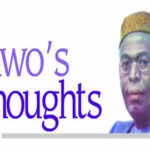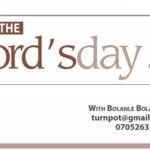
Participants in Stretched Terrains, a 10,000 kilometre trip to Senegal in an old Molue bus for the 13thDak’ArtBienniale, shared their experiences at an evening in Lagos
I was very relieved when they returned on Saturday because the bus made so much trouble on the way,” began Director, Goethe-Institut Nigeria, Friederike Moeschel, by way of opening the evening. “10,000 kilometres. That was the distance they travelled from Lagos to Dakar in the bus,” she added as she welcomed guests who had come to hear four of the six artists that participated in Stretched Terrains narrated their experiences that evening of May 28.
Curated by Germany- based Nigerian artist, Emeka Udemba, Stretched Terrains saw six artists travelled to Dakar, Senegal, for the 13th edition of the 13th Dak’ArtBienniale in the Molue Mobile Museum of Contemporary Art – an over 30-year-old Molue bus fitted with facilities including a solar power panel for the comfort of participants.
Apart from Udemba, other participants in the 10,000km road trip to Senegal were Nigerian photographer, graphic designer and experimental artist, Monsuru Alashe, who was also part of an earlier 2016 trip; German photographer, Gabriel Goller and Senegalese computer scientist, Dame Diongue. The quartet left Lagos together on April 10 and picked up Ghanaian sculptor, Ray Agbo, and Ivorian painter, Souleymane Konate along the way to and from the Biennial, where they all featured in artist talks and presented their works.
Unsurprisingly, it was a fairly decent crowd of art enthusiasts that converged on the City Hall, Lagos Island office of Goethe Institut, to hear the artists share their experiences and takeaways from the project supported by Lufthansa and Brussels Airlines.
Udemba
The project curator, who, had at a pre-departure media interaction, described the curatorial outlook of the project as being based on an exploration of how topography influences not just culture but also impacts the social, the economic and the political, with an emphasis on the experimental, expectedly, began his presentation on a note of gratitude.
He thanked the Goethe Institut and the other sponsors for enabling the artists to not only collaborate but also participate in Africa’s leading Biennale in Senegal. He reiterated the importance of the Molue Museum, noting that it helps protect the history and image of the iconic public transportation bus the Lagos State Government has gradually phased away while allowing people in different locales to see contemporary art.
Udemba, who showed lots of photographs during his presentation, then moved to preparation for the trip and selection of participants. He expressed happiness that the major aim of the initiative; collaboration and creation, were achieved even though the bus broke down several times on the way to Dakar.
“We didn’t just travel, we worked and brainstormed a lot. We had workshops with children and other interested people in some of the places where the bus broke down and I must say we were lucky to have a very experienced driver and mechanic who handled the car. Eventually, we got to an Artists Village about seven kilometres from Dakar where we stayed and finished our works,” said the curator whose photograph of where the participants were pushing the bus elicited laughter from guests.

The curator disclosed that they had a photographer working with a German private TV documenting their activities on the trip and that no female accompanied them this time, unlike the first time because those he “nominated pulled out at the last minute. They had some personal issues to sort so they couldn’t travel.”
Responding to a question on how they fared with food, Udemba said he learnt from experience and ensured that they stocked enough from Nigeria. He added that, “we were also open to food of the other countries. For instance, once you cross the border and get to the Benin Republic, the bread changes. All you have is baguette. Though it was tough when the bus broke, humanity took over. Religion and race didn’t matter because people saw that you were in distress and offered assistance. People gave us water, bananas and even cigarettes for people that smoke.”
Would he like to repeat the trip and would things have been different if the bus hadn’t developed so many faults, the Germany-based artist, who presented photographs of the two absent participants said: “Definitely, I would love to do it again. It was even a bit better than I thought it would be. We did have targets; places we wanted to be each day so, in that sense, there was stress but aside that, I would do the trip again. There are places where buses doing long trips stop and we also had our rest there. We were not threatened at all. It was when we got to Dakar that they stole our battery. We didn’t have illnesses because I ensured that we took all normal vaccinations.”
ALSO READ: 3 artists selected for 2018 Lagos-Berlin residencies
Alashe
For Alashe, 2013 winner of Life in My City Art Festival competition in the Textile/Graphics category, who was repeating the trip, it was a good opportunity to work on the concept of migration, using sand and photography.
He said: “I explored people’s desire, especially travelling abroad or staying in Africa. Sometimes, I questioned why they want to travel and most people had different reasons. Some just to travel but others said no matter what, they would remain in Africa. That’s why I chose sand and footprints, being the medium of movement from one spot to the other. I took lots of photographs but the language was a barrier. It was so difficult to tell people what I wanted to do. Some asked for money to take their shots and I had to convince them by bringing out my camera and showing them what I had already and what I wanted to do. It was really tough when our bus broke down in the middle of nowhere; we didn’t bathe for three days sometimes and had to relieve ourselves in the bush. However, we felt secure and had no security issues.”
Diongue
The Senegalese artist expressed happiness that the trip afforded him the opportunity to collaborate with Konate and mix technology. The computer scientist, one of whose works kept making noise intermittently during the evening, added that though the bus tried to be a kill-joy, some of the times it broke down allowed him to organise impromptu workshops for people, especially children. He expressed surprise at Nigeria’s large population size and noted that Anglophone West Africans are insular, unwilling to French. For him, it was a good trip that further widened his horizon.
Goller
Like the other participants, the German and youngest member of the group rated the trip a success. The documentary and portrait photographer, who also showed images of his works on the trip, said he had time to work on paintings and some installations. Though circumstances on the road made producing his kind of art difficult, he was still able to make some and teach children during one of their numerous stops.
He said: “The process for my art takes a lot of time, you have to be very precise and patient but I still managed to produce works. During one of the stops, I prepared a small workshop for children; I involved them in the process of painting. The idea was for them to create something. I gave them instructions and showed them what to do, how to use colour and pencil. This is one of the prints I made in Dakar; I like to use different layers until my painting is finished. My idea was to make portrait pictures of people I meet; I met different people everywhere we went and talked to them about the idea of stretched terrains, open borders. As I spoke with them, I took their photos and try to get the essence of that dialogue and let them flow into my painting. That was what I did on the trip. And would I love to repeat the trip? Definitely, I would love to do it again.”B
WATCH TOP VIDEOS FROM NIGERIAN TRIBUNE TV
- Let’s Talk About SELF-AWARENESS
- Is Your Confidence Mistaken for Pride? Let’s talk about it
- Is Etiquette About Perfection…Or Just Not Being Rude?
- Top Psychologist Reveal 3 Signs You’re Struggling With Imposter Syndrome
- Do You Pick Up Work-Related Calls at Midnight or Never? Let’s Talk About Boundaries






